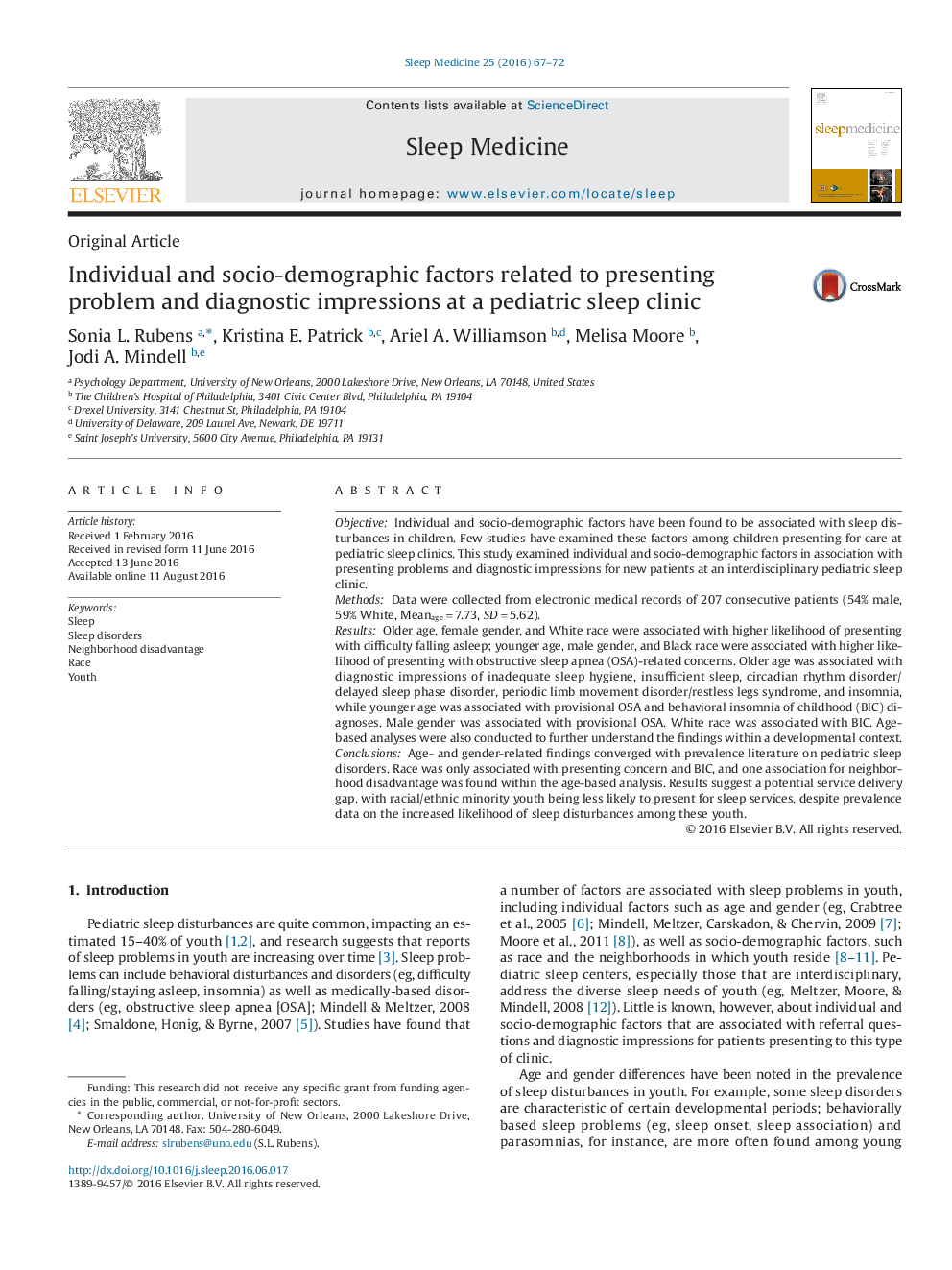| Article ID | Journal | Published Year | Pages | File Type |
|---|---|---|---|---|
| 5643932 | Sleep Medicine | 2016 | 6 Pages |
â¢Age and gender were associated with referral question and diagnostic impressions.â¢Race was associated with referral question and behavioral insomnia in children.â¢Neighborhood disadvantage did not predict most diagnostic impressions.â¢Findings suggest a potential service delivery gap for using a specialty clinic.
ObjectiveIndividual and socio-demographic factors have been found to be associated with sleep disturbances in children. Few studies have examined these factors among children presenting for care at pediatric sleep clinics. This study examined individual and socio-demographic factors in association with presenting problems and diagnostic impressions for new patients at an interdisciplinary pediatric sleep clinic.MethodsData were collected from electronic medical records of 207 consecutive patients (54% male, 59% White, Meanageâ=â7.73, SDâ=â5.62).ResultsOlder age, female gender, and White race were associated with higher likelihood of presenting with difficulty falling asleep; younger age, male gender, and Black race were associated with higher likelihood of presenting with obstructive sleep apnea (OSA)-related concerns. Older age was associated with diagnostic impressions of inadequate sleep hygiene, insufficient sleep, circadian rhythm disorder/delayed sleep phase disorder, periodic limb movement disorder/restless legs syndrome, and insomnia, while younger age was associated with provisional OSA and behavioral insomnia of childhood (BIC) diagnoses. Male gender was associated with provisional OSA. White race was associated with BIC. Age-based analyses were also conducted to further understand the findings within a developmental context.ConclusionsAge- and gender-related findings converged with prevalence literature on pediatric sleep disorders. Race was only associated with presenting concern and BIC, and one association for neighborhood disadvantage was found within the age-based analysis. Results suggest a potential service delivery gap, with racial/ethnic minority youth being less likely to present for sleep services, despite prevalence data on the increased likelihood of sleep disturbances among these youth.
